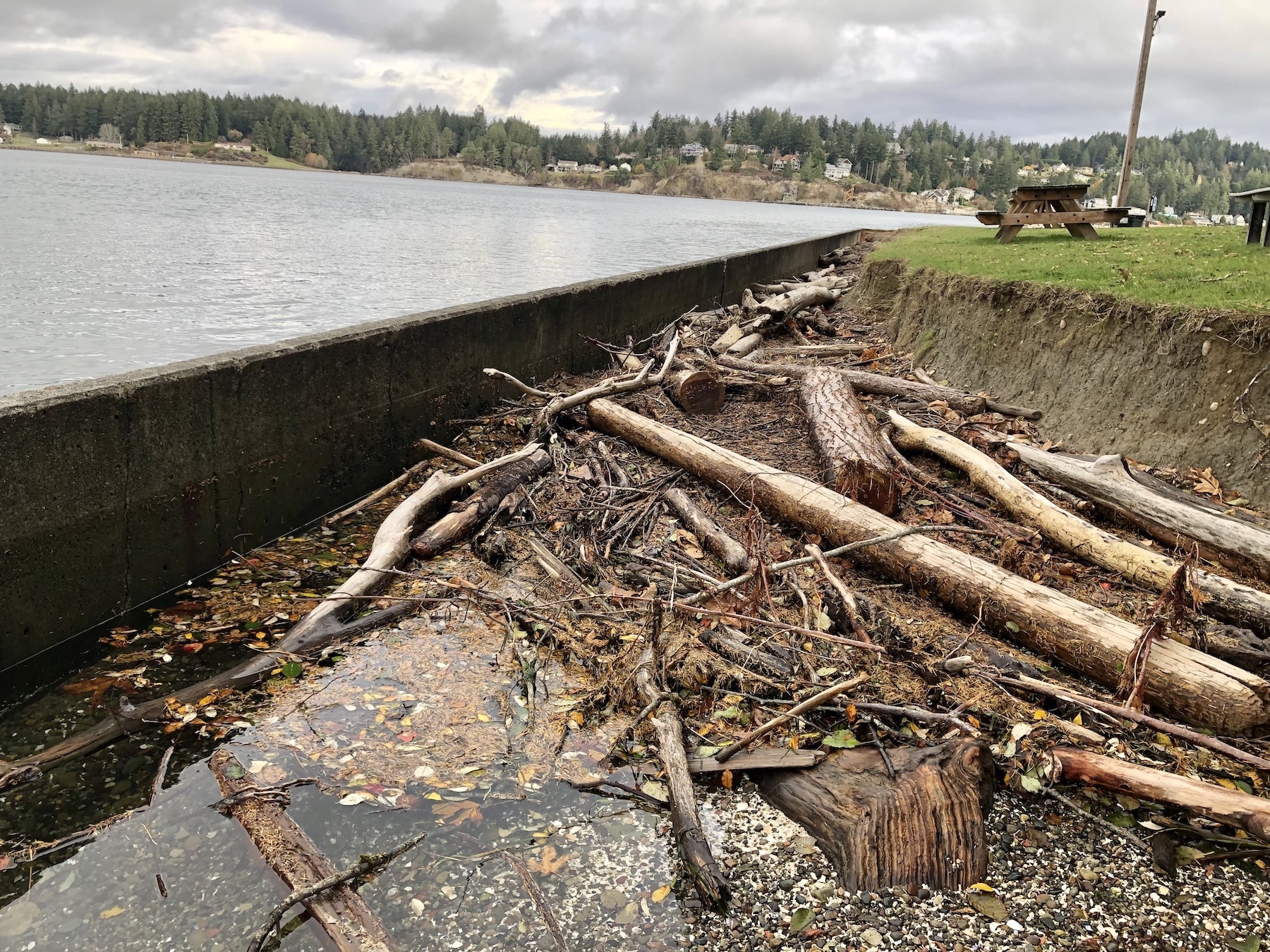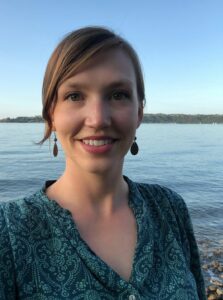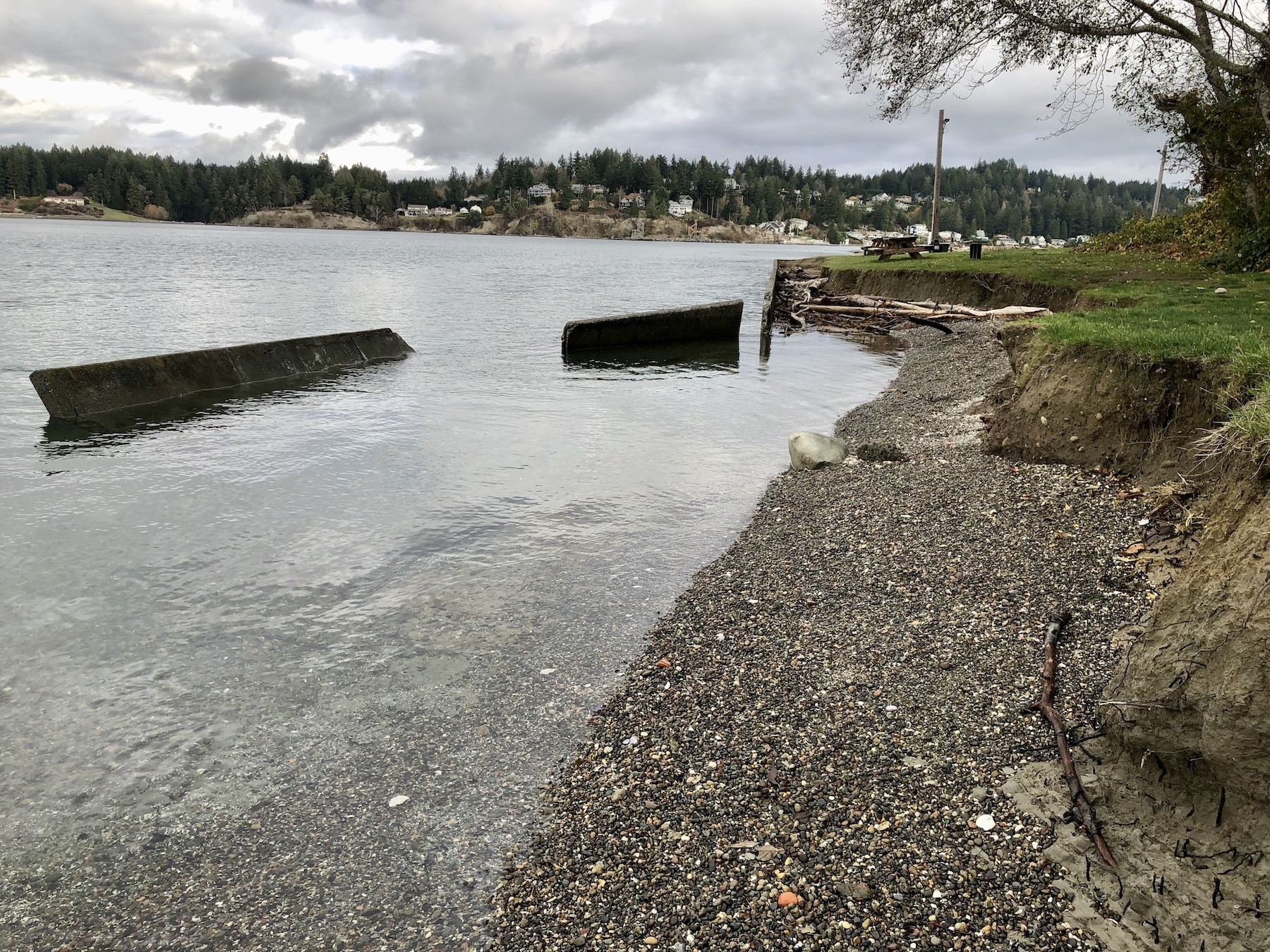Community Environment Government
Removing bulkheads recommended for sandspit park
The Peninsula Metropolitan Parks District took the next step toward possibly removing failing bulkheads and restoring the shoreline of its Fox Island sandspit park.
Pierce Conservation District and consultant Blue Coast Engineering presented three options for Tacoma DeMolay Sandspit Nature Preserve during a PenMet study session on Nov. 15. The conservation district and PenMet staff recommended Concept 3. The board agreed to narrow preliminary design to that path.
The option would most fully return the shoreline to its natural state by removing the main concrete bulkhead along the shoreline nearest the spit and a fallen concrete bulkhead farther to the southwest. The same structures would be pulled out in Concept 2.
The difference is that Concept 3 would create a seamless, gradual slope between the beach and the uplands. The slope would come at the expense of half of the 9,500 square feet of picnic area lawn.
In Concept 2, logs would be placed for stepping up or down between the uplands and beach. It would spare all but 1,000 square feet of grass, Blue Coast principal engineer Jessica Cote said during a Zoom presentation to the board.
Dilapidated bulkheads serve little purpose
Concept 1 would remove just a portion of the bulkheads but save most of the lawn. It would be difficult to permit and fund, and thus is not a feasible option.
“Our community doesn’t go there for the grass, they go there for the beach,” Board President Steve Nixon said. “So, I’m particularly supportive of Option 3 and returning the site to a more natural state.”
Commissioner Kurt Grimmer also said he was “fully in support” of Concept 3.
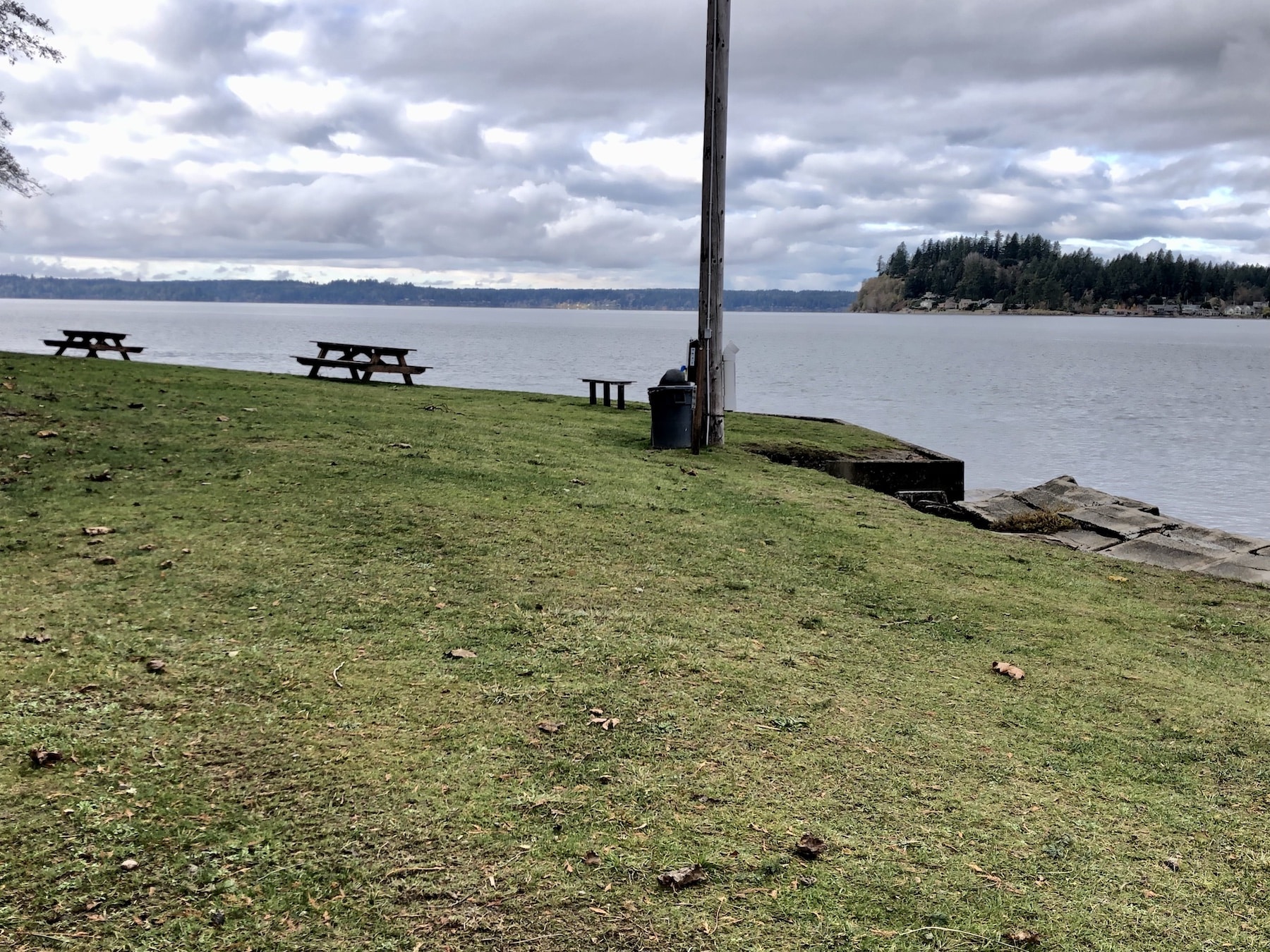
In the preferred option, the slope would be regraded and eroded to a natural slope that would result in the loss of much of the picnic area grass.
The 1960s-era bulkheads aren’t serving much purpose anymore. Seawater goes over, around and through them and has scoured out the backfill, leaving a ledge.
But the restoration is not targeted at simply removing non-functioning concrete for aesthetics’ sake. The goal is to reconnect the uplands to the beach to the water. That would enhance habitat while improving beach access for recreation.
Bulkheads keep sediment from being added to the sandspit
Without bulkheads, sediment would naturally slough off the hillside to the beach and be carried by the water to the spit, which has not been growing as it should.
“It will ensure the sandspit can survive as a landform into the future, particularly as water levels rise and we get big storms during the winter,” Mary Krauszer, the conservation district’s shorelines program manager, said during a Wednesday phone interview. “The sandspit will be more resilient over time if it gets higher and wider, and the only way to get higher and wider is if it has sediments flowing to it from the bluffs.”
Without the sediments, the spit could become steeper and narrower. It would likely lose the large wood and plants on top of it. There might not be anything remaining for people to walk on during high tides.
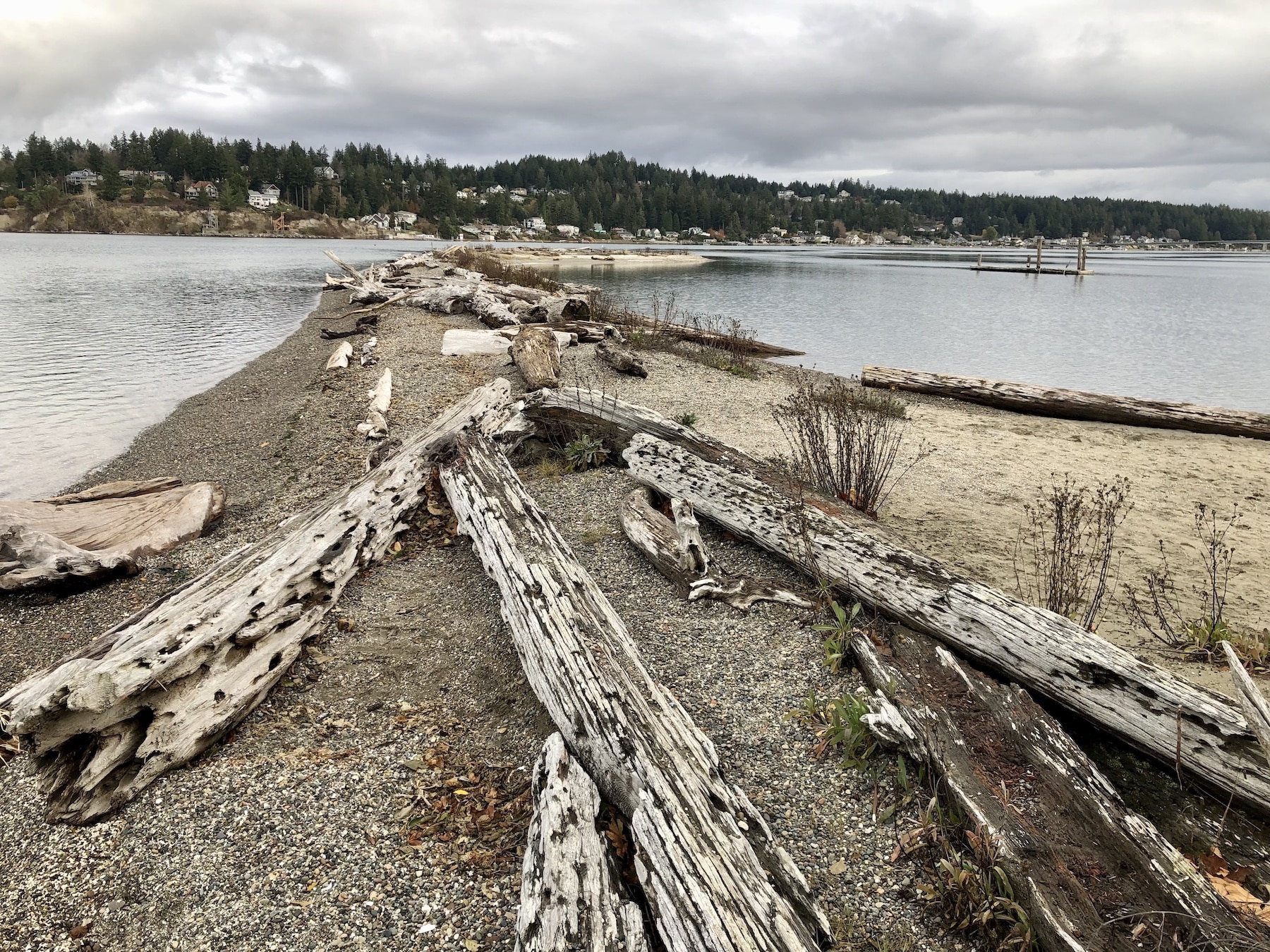
Removal of the bulkheads would allow the bluffs to slide to the water and sediment to be carried down and added to the sandspit.
The sediment provides a sandy-gravelly mix on the upper beach where forage fish lay their eggs.
Sandspit key for endangered chinook
“Everything eats them,” Krauszer said of the little fish. “So, they are a really important link in the food chain to lots of things, including marine birds, salmon, all the way up to our orca whales.”
The state Department of Fish and Wildlife has documented that young salmon, particularly endangered chinook, hang out along the spit’s shore. They find more to eat and can better evade predators before migrating to the ocean, Krauszer said.
Pouring a concrete wall and covering what was previously the beach with backfill is no longer a standard practice. A permit probably couldn’t be issued to backfill the existing bulkhead.
“That’s not something that would fly today,” Krauszer said. “So we are helping to consider what might be a more resilient strategy that will benefit the people who use the preserve and the wild critters that depend on it.”
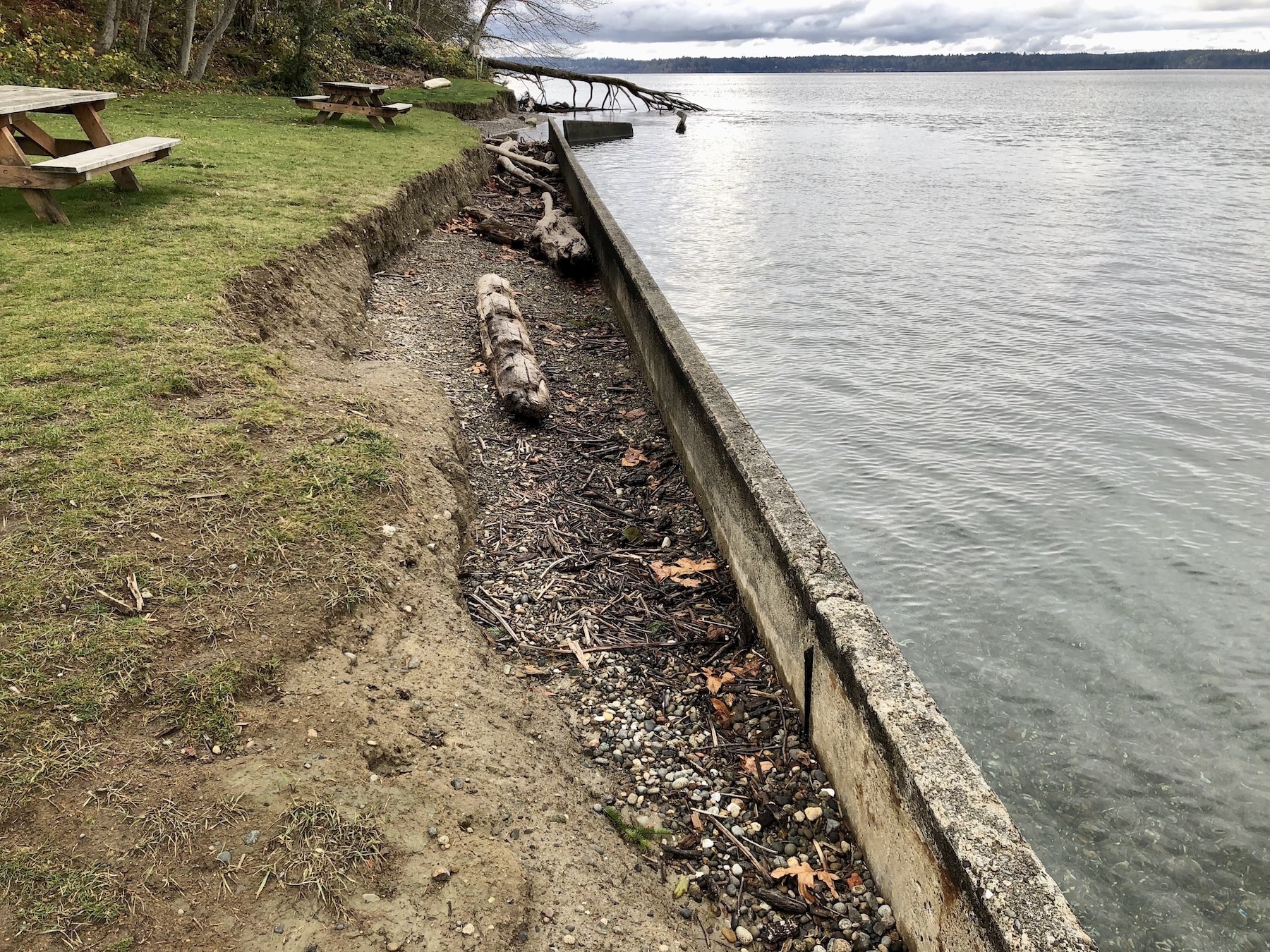
A bulkhead like this one built in the 1960s — in which a wall is built and filled in behind — would not be allowed to be built today, or probably even allowed to be refilled.
Under the preferred third concept, the slope behind the bulkheads would be regraded to remove the ledge and create a natural beach slope. Erosion would also play a part. It would be replanted with natural vegetation.
Second concept would add log step-downs
“There are lots of benefits of doing that,” Krauszer said. “One, you’re removing the steep, abrupt elevation change so people can more easily get to the beach, but there are a lot of ecosystem benefits as well.”
Concept 2, with the step-down logs, would only temporarily spare the lawn.
“Over the long term, it would continue to be eroded away by storms even with the logs there,” Krauszer said.
During two meetings, the conservation district polled the public and the majority supported Concept 3.
“They first identified that the beach is what’s most important to them and they supported restoring the natural shoreline along the entire preserve,” Krauszer said.
Though the park is owned by PenMet, the conservation district initiated and has overseen the study.
It sought and received a $50,000 grant from the Pierce County Flood Control Zone District for a feasibility study that was completed in 2021. Then it secured $94,500 from Fish and Wildlife’s Estuary and Salmon Restoration Program for preliminary design that it expects to be completed in June 2023.
At that point, PenMet will determine whether and how to proceed. The conservation district would keep the lead and pursue the funding.
This is only a study
The parks district recently allocated $1.7 million in its 2023 capital budget to develop a master plan for the DeMolay Sandspit and address the highest priorities. Removing the bulkheads will be considered in the master plan, said Executive Director Ally Bujacich. But no money has been set aside to execute it.
There is no guarantee at this stage that the bulkheads will or won’t be removed. It’s being evaluated on a step-by-step basis.
“This study is the first step in a multi-phase process to determine if removing the bulkhead is feasible, how it might impact the Tacoma DeMolay Sandspit’s use as a community park, and, if it is recommended to advance the study beyond preliminary design, how that next phase of work might be funded,” Bujacich said. “We are still very early in the process, and the preliminary design phase will provide more information to help answer those questions. PenMet Parks will continue to act as a collaborative partner with Pierce Conservation District, who is the project lead, as the study progresses through preliminary design.”

